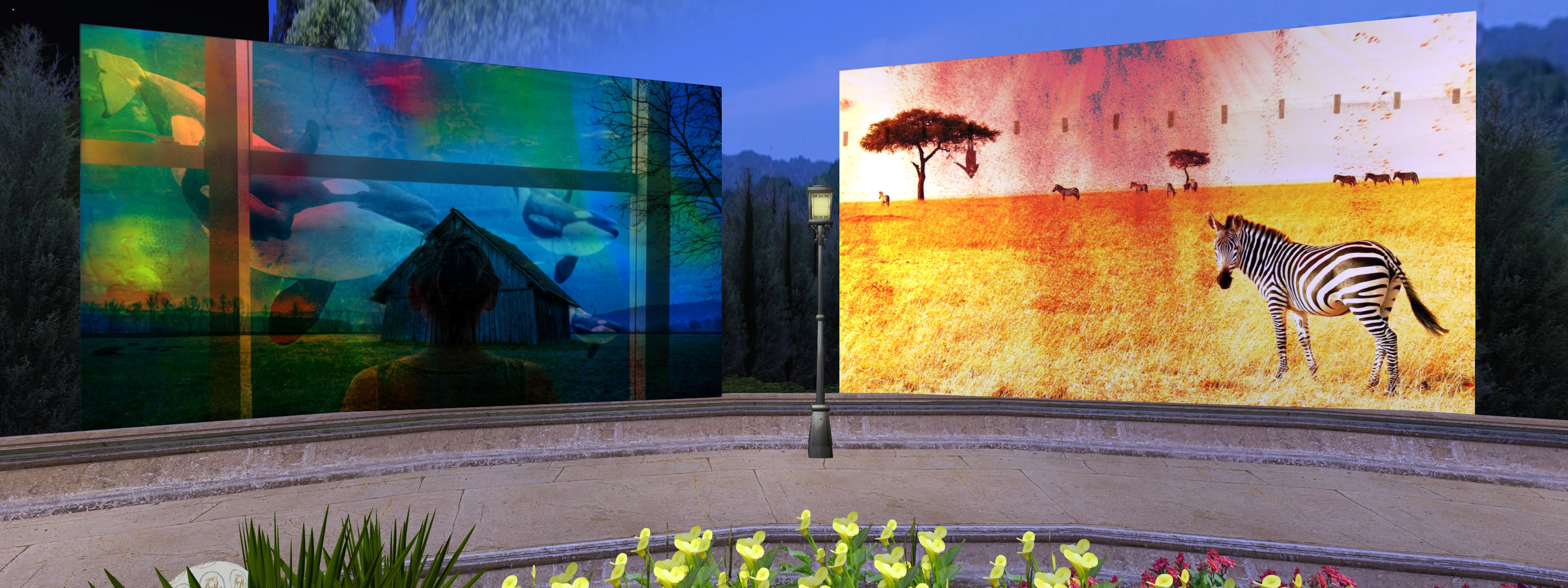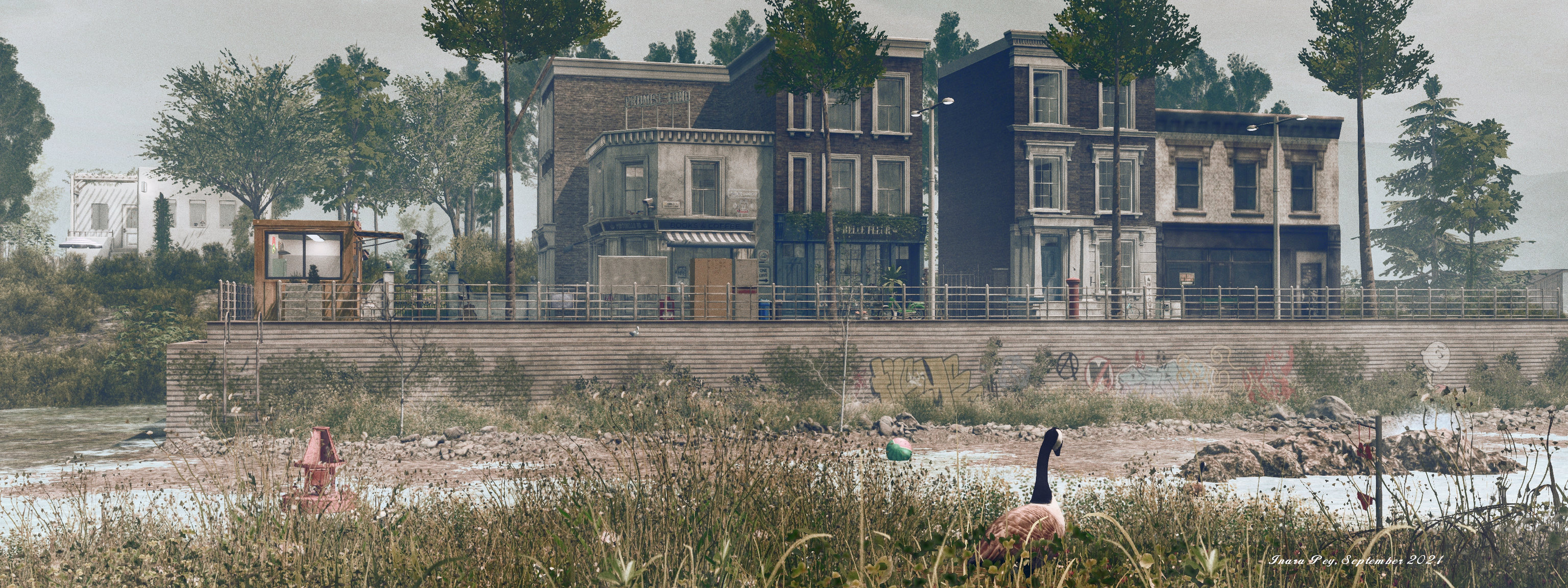
Now open at the Kondor Art Garden, curated by Hermes Kondor, is Illusion, an exhibition of 2D art by photographer-artist Suzen JueL (JueL Resistance). It offers an engaging range of pieces that mix styles and ideas to present images that are visually engaging and carry with them strong narratives.
Within these pieces might we find photo-collages, measures of surrealism, expressionism and more; stories with an edge of abstraction and / or the broad strokes of impressionism, some of which sit as dream states in their form and colour. Primarily produced within Second Life and richly post-processed, these are pieces that also encompass elements and images drawn from the physical world.
An intriguing aspect of several of the pieces is that rather than using a traditional avatar, Suzen presents a mannequin-like personage that, while female in form, offers us – male or female – the opportunity for greater association with it, and thus themes and emotions contained within the pieces where it is used.

With their focus on the mannequin presence, these particular images offer a sense of dual narrative. Backwards into Depths, for example offers the suggestion of taking a leap of faith. On the one hand, they colours stand in emphasis of the fact it is into the unknown we might jump whilst also presenting the sense of fear that such leaps often entail. Similarly, Monster at first seems to suggest the coming of a horror, a strange, looming creature that might well be in pursuit of us – but then on second look, it perhaps suggests we are the monster, looming forth to inflict something on the unwary.
Elsewhere the narrative is more direct, as with Whale Dreaming, a marvellous photo-collage that folds into itself considered elements of surrealism, impressionism and realism. Beside it, Hanging with the Zebra similarly offers a mix of surrealism and over-exposed expressionism that holds the eye before the magnificent Elephant awaits to again offer use entwined stands of narrative.
In their mixing of styles, narrative, these are pieces that live up to the title of the exhibition. Each gives us an illusion to ponder, be it directly through the image (again, I’d point to the likes of Whale Dreaming) or in the manner in which meaning and narratives might be seen to be intertwined to hold our attention, making it an engaging and captivating exhibition.

SLurl Details
- Illusion, Kondor Art Garden (Waka, rated Moderate)
